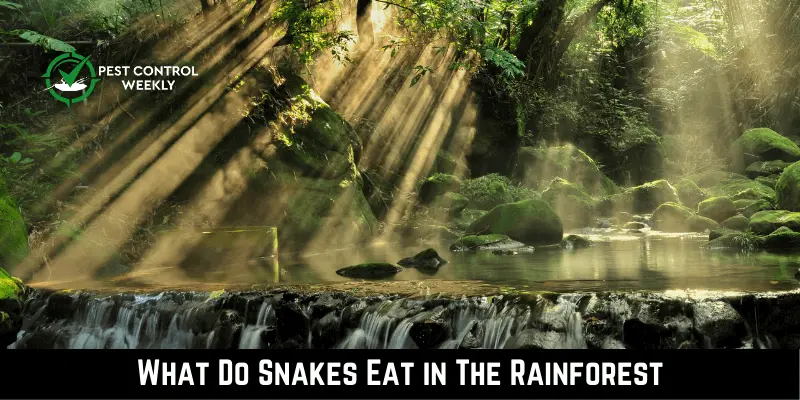The Earth’s rainforests are like a green tapestry filled with many plants and animals living together in a complex web of ecological connections. Many snakes and other animals live in the world’s rainforests, where they wait to poison or squeeze their food. But what do snakes eat in the rainforest?
Snakes in the rainforest eat things like birds, animals, and even other snakes. Most snakes go after small and medium-sized animals.
In this blog post, we’ll take you on an exciting journey as we explore the food choices of these mysterious jungle residents and explain all the details of their eating habits.
Type Of Snakes Found In Tropical Rainforest
The tropical rainforests’ tremendous biodiversity is home to many snake species with distinct features and unusual behaviors. The smallest and most elusive snakes live in this complex ecology. A few prominent examples found within these lush environs include:
Green Anaconda (Eunectes Murinus)
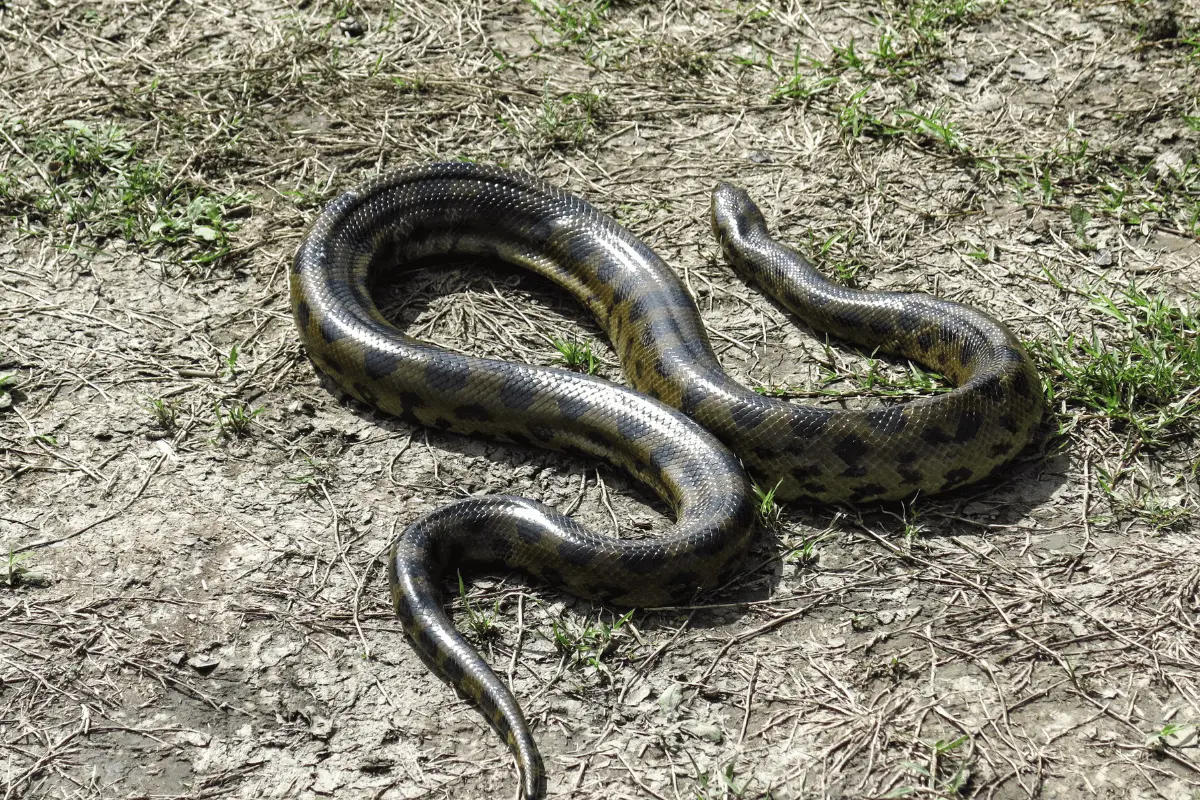
The green anaconda is a large snake native to the muddy rivers and dense forests of the Amazon. Its color and wavy patterns help it hide, so it is very good at catching its food by surprise. It moves silently through the water or the leaves, avoiding detection.
In its natural habitat in the jungle, it feeds on a wide variety of animals, from rodents and birds to other reptiles. Its massive size and powerful jaws help it to easily seize and devour its prey. In the tropical environment, it is a dangerous killer.
Emerald Tree Boa (Corallus Caninus)
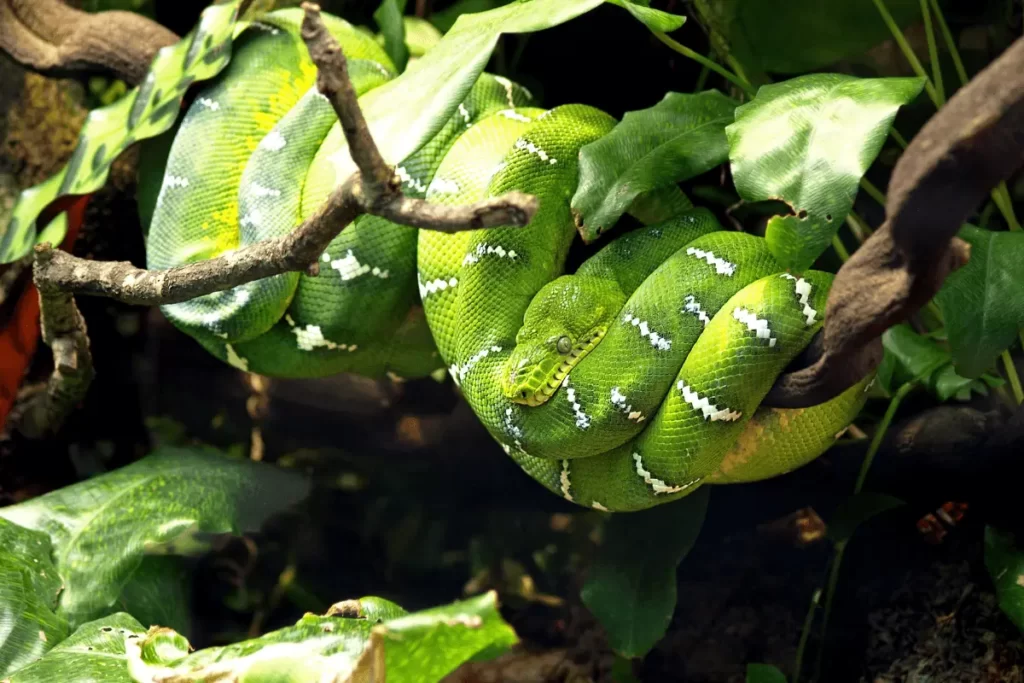
Emerald tree boas are amazing green snakes native to the canopy of the Amazon rainforest. Its long, sticky tail and flat body allow it to move among the treetops silently and softly like a green ninja. It uses these skills to hunt for food in the trees. This snake’s favorite foods are birds and other tiny creatures that make their homes in the canopy. The emerald tree boa is a really cool animal in its lush, green home because of its beautiful color and smart way of finding.
Wagler’s Pit Viper (Tropidolaemus Wagleri)
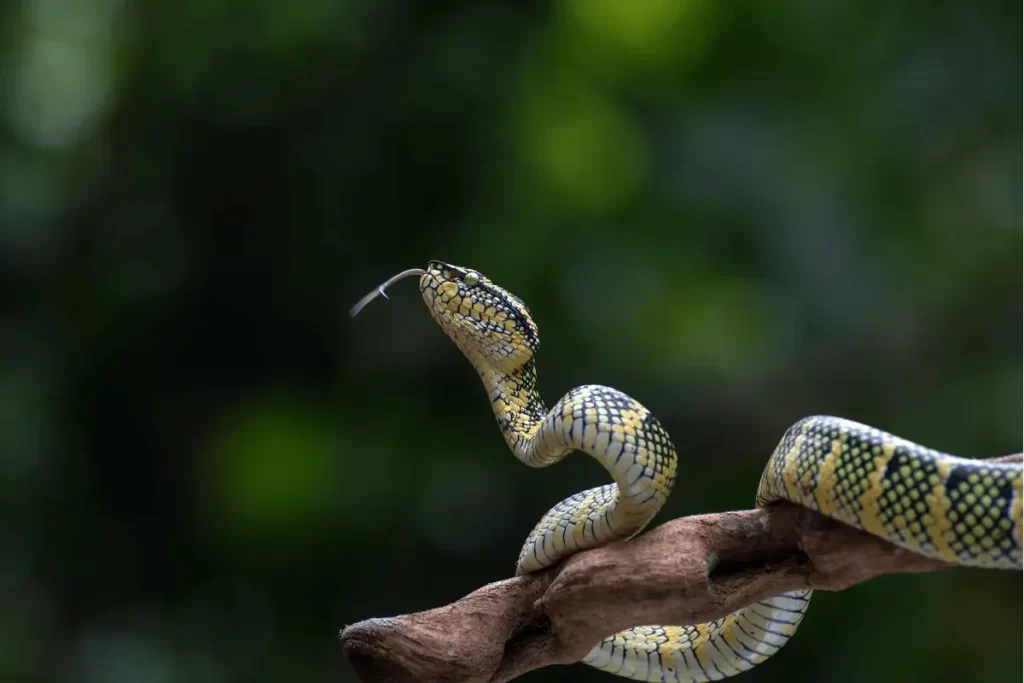
The Wagler’s pit viper is a venomous snake found in Southeast Asian rainforests. It holds small heat-sensing pits between its eyes and nose. It can sense the heat of living, moving creatures even in total darkness. Even at night, it’s a great hunter. This snake-like feeds on the flesh of warm-blooded animals in its native habitat. It is able to detect prey such as birds and small animals with the help of its heat-sensing holes.
King Cobra (Ophiophagus Hannah)
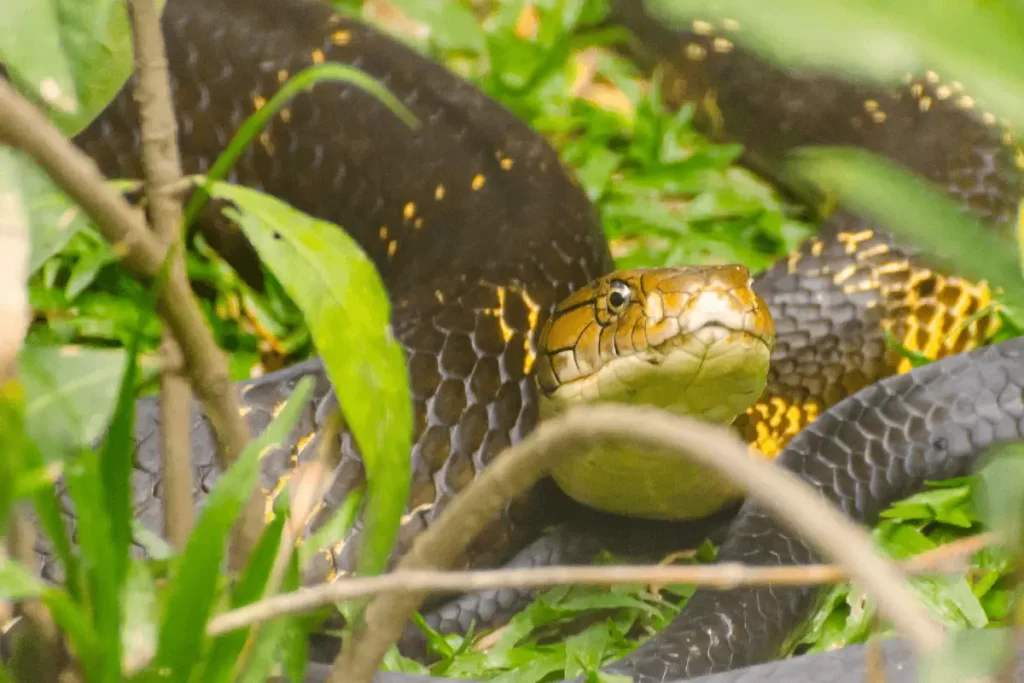
The King Cobra is the longest and most deadly kind of poisonous snake. The Southeast Asian rainforest is home to this animal. This large snake may use its neck as a hood to warn of threats. Its venom is strong enough to kill large creatures like other snakes and large monitor lizards. The King Cobra is noticeable even in the dense canopy of a rainforest. It’s a king that hunts and defends.
Eyelash Viper (Bothriechis Schlegelii)

The eyelash viper is a tiny snake found in the Central and South American tropics. Its name comes from the small eyelashes-like hairs that cover its eyes. The snakes can range in color from brilliant yellow to green to rosy brown. This makes it a master of camouflage among the woods.
In the jungle, it hides to catch food. This snake has an attraction for frogs and other amphibians. The eyelash viper is a fantastic example of jungle life due to its unique eyelashes and vivid coloring.
Gaboon Viper (Bitis Gabonica)
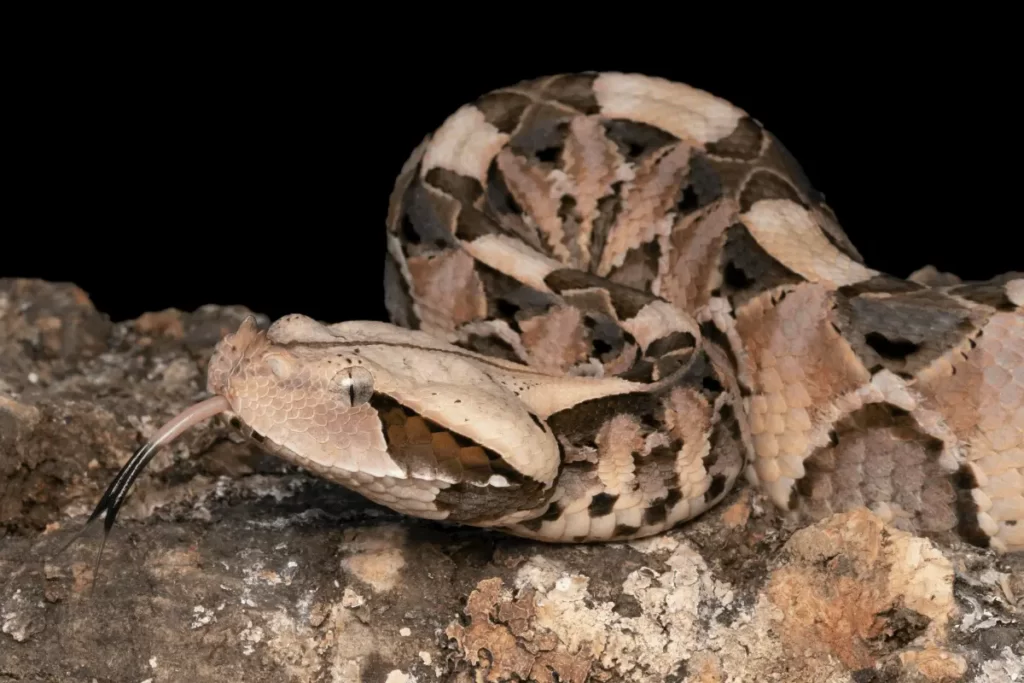
Snakes such as the Gaboon viper may be found in the African forests just beyond the great desert. Its teeth may be up to 2 inches long, making it the snake with the longest teeth. Its overall body and skin with leaf-like patterns make it an excellent camouflage. It hides and jumps out at food that gets close.
This viper likes to dine on rodents, birds, and other similarly sized animals in its native rainforest habitat. The Gaboon viper, in the wild and wonderful forest, is a stealthy and fierce hunter with huge jaws and cool leaf-like skin.
Boomslang (Dispholidus Typus)
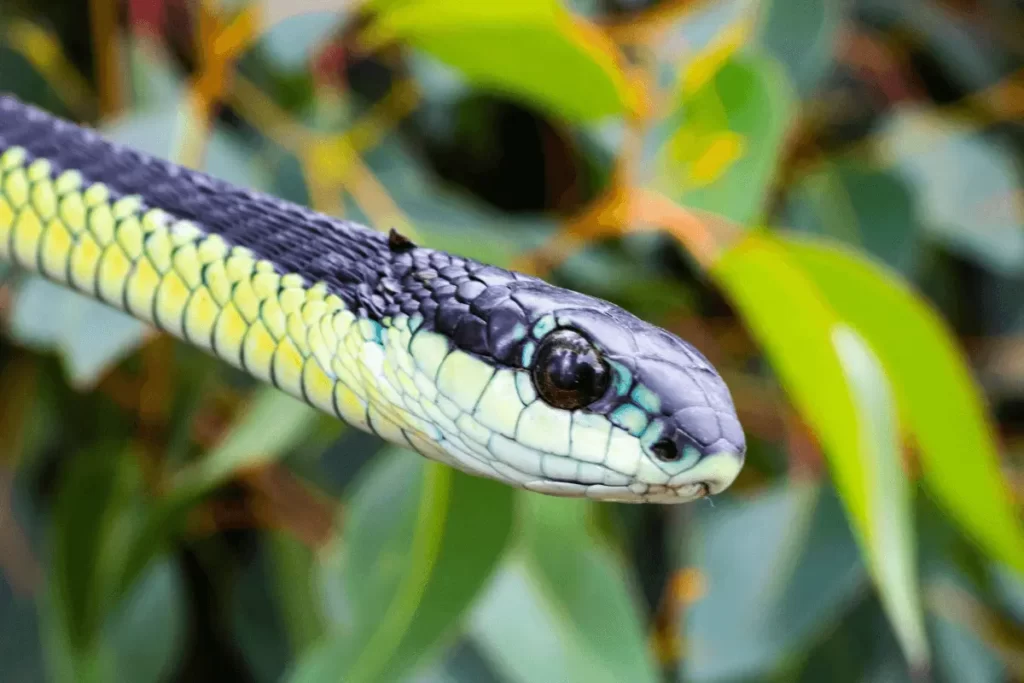
The boomslang lives in the jungles under Africa’s great desert and spends its days basking in the sun and climbing trees. It has large canine teeth at the rear of its mouth and its eyes are set far apart. Its venom is extremely powerful and causes its prey to bleed within.
The boomslang, at home in the forest, eats rodents and other small mammals. It catches prey, including rodents, birds, and even other reptiles with the use of its powerful toxin. In the vast, uncontrolled world of the jungle, the boomslang stands out as a remarkable and powerful monster due to its large eyes, rearward-facing fangs, and powerful venom.
Where Do Snakes Live In Tropical Rainforest?
In tropical rainforests, snakes occupy diverse habitats, utilizing their exceptional adaptations to thrive in these lush environments:
Arboreal Abodes
The high jungle canopy is home to many snakes, like the colorful Emerald Tree Boa (Corallus caninus) and Eyelash Viper (Bothriechis schlegelii). These tree-dwelling snakes have slim bodies and tails that can be grabbed. This makes it easy for them to move through the trees and hunt birds and mammals.
Terrestrial Ground
The jungle floor is home to many snake species, such as the strong King Cobra (Ophiophagus hannah) and the well-hidden Gaboon Viper (Bitis gabonica). They sneak up on their prey by having good instincts and moving slowly. The thick undergrowth and dead leaves give these snakes plenty of places to hide from possible enemies.
Aquatic Enclaves
Some snakes, like the huge Green Anaconda (Eunectes murinus) and the slender Tentacled Snake (Erpeton tentaculatum), like to live in the water in humid jungles. These snakes are good at getting around in rivers, lakes, and marshes that move slowly. Their slim bodies and special sense organs help them find and catch food that lives in water or near water.
Subterranean Sanctuaries
Some snakes, like the burrowing Brahminy Blind Snake (Indotyphlops braminus) and the burrowing African Mole Snake (Pseudaspis cana), spend most of their time underground. These snakes are hard to find because they live underground or in leaf litter. Their small eyes and cylinder bodies help them move through the earth. They mostly eat non-animal things like bug eggs and earthworms.
Riparian Ecosystems
Riparian Ecosystems: Snakes, like the poisonous Wagler’s Pit Viper (Tropidolaemus wagleri) and the quick-moving Water Snake (Helicops spp. ), often live in the areas where land and water meet. These wetland areas have a lot of food and a variety of plants for hiding and warming up. Snakes in these areas can move on both land and water, which shows how well they can adapt to their surroundings.
Why Do Snakes Live In The Forest?
Snakes have found solace in forested landscapes for a multitude of reasons, including:
- Forests have a variety of prey, including small animals, birds, amphibians, reptiles, and invertebrates. This great sustenance supports various snake species, each capitalizing on abundant nourishment.
- Dense foliage, leaf litter, and tangled understory offer great hiding spots and cover for snakes. Many species exhibit cryptic coloration and patterns that meld seamlessly into their surroundings, affording protection from predators and enabling effective ambush tactics.
- Forests encompass diverse microhabitats, from lofty canopies and shadowy understories to waterlogged swamps and sun-dappled glades. This heterogeneity enables snakes to occupy different niches, showcasing their adaptability and resilience in ever-changing environments.
- Forests provide a range of microclimates, allowing snakes, as ectothermic creatures, to regulate their body temperature effectively. Sun-dappled clearings facilitate basking, while shaded areas offer respite from excessive heat.
What Do Snakes Eat In The Tropical Rainforest?
According to PLoS Biol. in the tropical rainforest, snakes have adapted to exploit the rich biodiversity, feasting on a diverse array of nourishment, including:
- Rodents, bats, and other small mammals constitute a primary food source for many snake species, such as the Boa Constrictor (Boa constrictor) and the Green Anaconda (Eunectes murinus), who rely on their strength and constriction to subdue their prey.
- Arboreal species, like the Emerald Tree Boa (Corallus caninus) and the Eyelash Viper (Bothriechis schlegelii), have evolved to adeptly navigate the rainforest canopy, preying upon birds and their eggs with remarkable agility and stealth.
- Snakes such as the Blunthead Tree Snake (Imantodes cenchoa) and the Cat-eyed Snake (Leptodeira spp.) have developed a taste for amphibians, including frogs and their eggs, which they often hunt in the vicinity of water sources and riparian zones.
- Some snake species, like the King Cobra (Ophiophagus hannah), are ophiophagous, meaning they predominantly consume other snakes. Smaller reptiles like lizards and geckos may fall prey to serpents like the Vine Snake (Ahaetulla spp.).
- Certain snakes, particularly the smaller and fossorial species like the Brahminy Blind Snake (Indotyphlops braminus), exist primarily on invertebrates, including insects, larvae, and earthworms.
- Aquatic and semi-aquatic snakes, such as the Tentacled Snake (Erpeton tentaculatum) and the Water Snake (Helicops spp.), have honed their skills in capturing fish, utilizing specialized senses and swift reflexes to snag their aquatic quarry.
Type of snakes found in Amazon rainforest
The Amazon rainforest, a vast and diverse ecological haven, harbors an extraordinary array of snake inhabitants. These devious creatures exhibit notable distinctions in dimensions, pigmentation, and environmental roles. Within this lush domain, one can stumble upon the following remarkable snake species:
Green Anaconda (Eunectes Murinus)
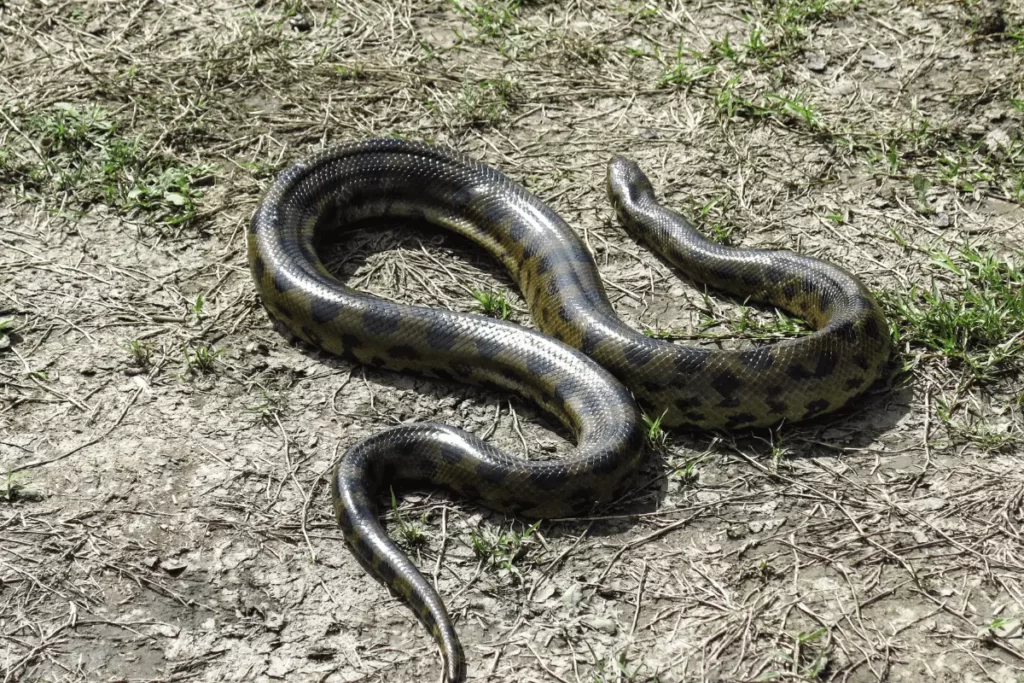
When it comes to snakes, the green anaconda is the king of the jungle. It has the potential to reach the lengths of a bus and the weights of three grown men. This giant snake enjoys floating along the Amazon River. It is excellent at hunting prey silently in the water, where it can do it with relative silence.
Green Anaconda’s favorite foods are the small mammals, birds, and even other reptiles that live in the jungle where it lives. It is both a powerful swimmer and a sneaky predator, allowing it to sneak up on prey without being spotted. The green anaconda is an impressively large and fascinating species of the natural rainforest environment.
Emerald Tree Boa (Corallus Caninus)

The emerald tree boa is a beautiful snake that spends its nights up in the branches of the Amazon rainforest. It’s a bright green color with white stripes that make it look even better. This snake has a penchant for tree-dwelling rodents and avian species.
Tree Boa uses specialized holes that let it sense the body heat of living, moving creatures to locate potential sources of sustenance. Even in the dark, it can use this to locate and catch food. The emerald tree boa is a fantastic creature of the night, thanks to its brilliant green color, heat-sensing pits, and prowess as a hunter.
Amazon Coral Snake (Micrurus Spixii)
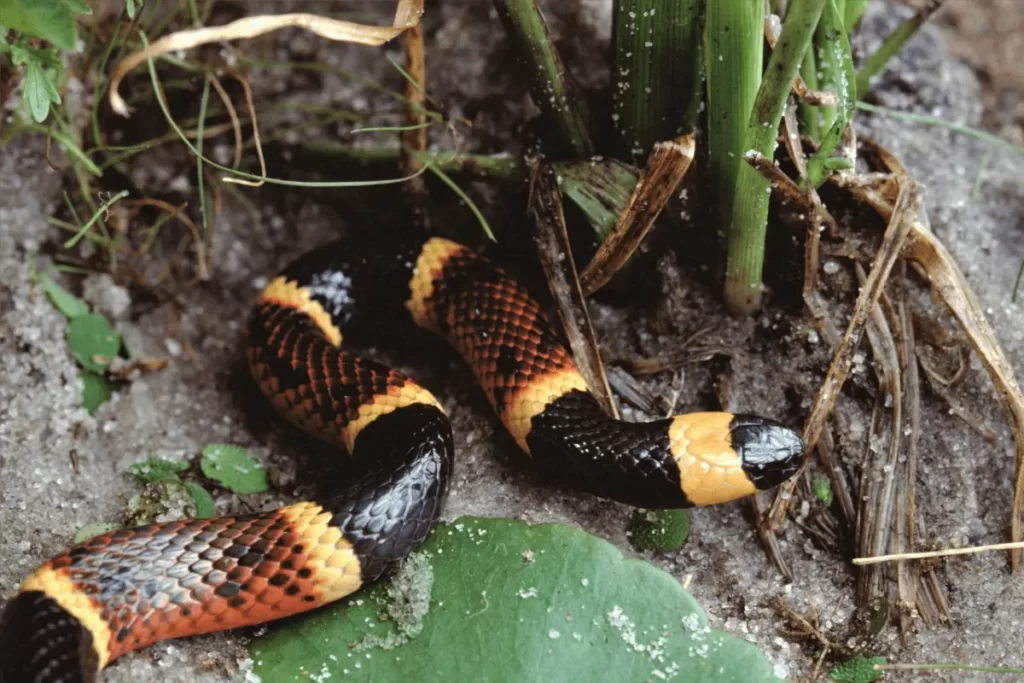
In the Amazon, you may find the stunning Amazon Coral Snake. The red, black, and yellow or white stripes look stunning. It’s venomous but also quite nervous, so it hardly causes human problems. Small animals in the bush are a favorite snack for this snake. Its strong venom allows it to catch prey such as rodents and lizards. The coral snake is one of the remarkable creatures that call the Amazon jungle home, yet despite its toxicity, it poses little risk to humans.
Red-Tailed Boa (Boa Constrictor)
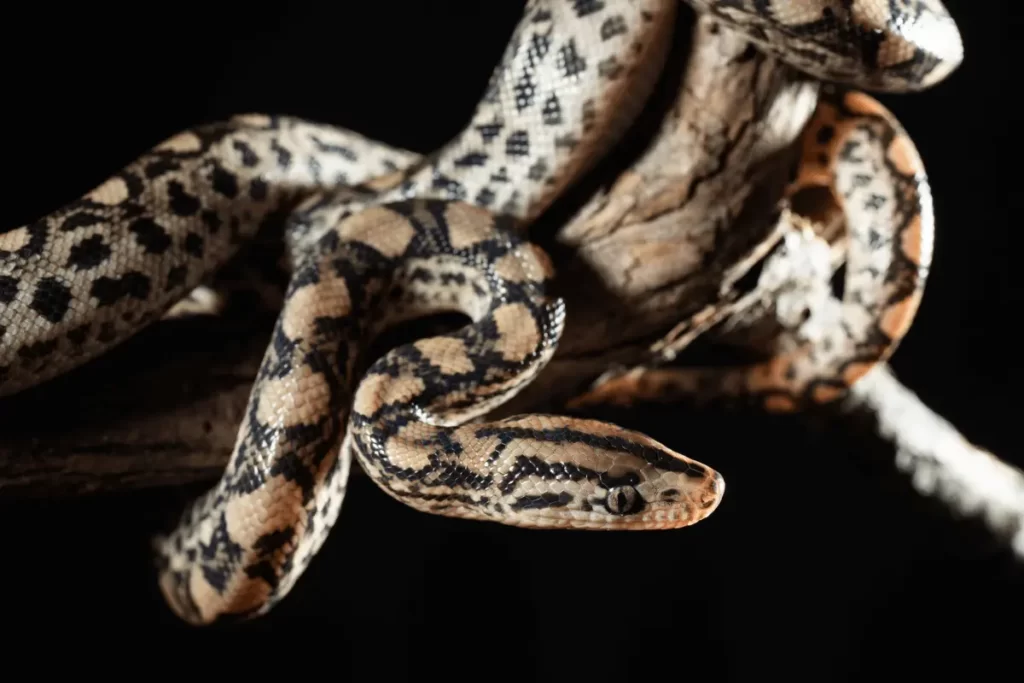
People all across the world are familiar with the Red-Tailed Boa because it is a large, powerful snake. It doesn’t have poison, but it is so strong that it can squeeze its food until it can’t breathe. It is well-suited to life in the Amazon rainforest because of its ability to change colors from brown to grey, and its unique red tail.
The small animals and birds are favorites of this boa’s diet. The Red-Tailed Boa is one of the coolest animals in the rainforest because of its solid physique, magnificent tail, and adeptness at concealing.
Tawny Lancehead (Bothrops Atrox)
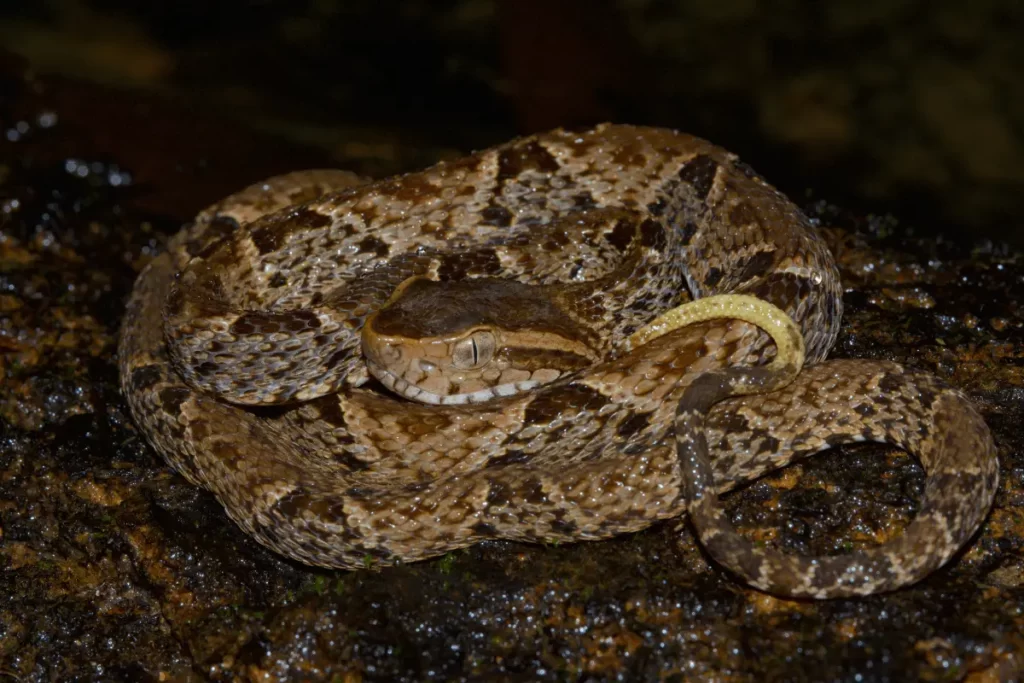
The Amazon jungle is home to a venomous snake known as the Tawny Lancehead, or fer-de-lance. It is a little bit grumpy, and its poison is very strong, so it often bites people the most. It has a cool design on its skin that makes it look like the forest floor, so it can hide very well. This snake enjoys feeding on lizards and tiny rodents it finds in the bush. It kills its prey with a single, deadly bite. The jungle’s Tawny Lancehead is cool even if it’s dangerous.
What Do Snakes Eat In The Amazon Rainforest
In the diverse ecosystem of the Amazon rainforest, snakes exhibit a wide range of dietary preferences. The following list highlights some of the primary food sources for Amazon snakes:
- The common lancehead (Bothrops atrox) and the boa constrictor (Boa constrictor) are among the Amazonian snakes that predominantly feed on rodents, such as spiny rats, marsupial mice, and various rainforest squirrels, helping control their populations.
- The emerald tree boa (Corallus caninus) and the green tree python (Morelia viridis) are arboreal snakes that specialize in capturing birds by employing stealth and remarkable camouflage to blend in with the canopy foliage.
- The rainforest cat-eyed snake (Leptodeira annulata) is known for its preference for frogs and toads, skillfully navigating both the forest floor and aquatic habitats in pursuit of its prey.
- The Amazon water snake (Helicops angulatus) is an aquatic species that consumes various fish, utilizing its strong swimming capabilities to move swiftly through the water and catch its prey.
- The blunt-headed tree snake (Imantodes cenchoa) is a slender, arboreal species that primarily feeds on invertebrates, such as insects, spiders, and centipedes, demonstrating the adaptability of snakes in the Amazon rainforest.
- The mussurana (Clelia clelia) is an example of a snake that consumes other snakes, including venomous species like the common lancehead, showcasing the intricate food web dynamics in the Amazon rainforest.
FAQs
What Layer Of The Rainforest Do Snakes Live In?
Snakes inhabit various strata within the rainforest, often determined by their ecological niche and adaptive prowess. Arboreal snakes, such as the emerald tree boa, dwell within the verdant canopy, navigating tree limbs. Conversely, like the fer-de-lance, terrestrial species stalk the forest floor for prey. Some snakes even traverse both realms, demonstrating extraordinary versatility.
How Does A Snake Survive In The Rainforest?
Snakes employ remarkable adaptability to thrive in the rainforest. Camouflage is a vital survival mechanism, with scales that mimic foliage or dappled sunlight, allowing them to blend seamlessly into their surroundings. These reptiles exhibit great thermoregulation, exploiting the rainforest’s dense shade and humidity to maintain ideal body temperatures. Snakes also possess acute senses, facilitating effective predation in this bustling, competitive environment.
Do Snakes Eat Parrots In The Rainforest?
Within the diverse rainforest ecosystem, snakes occasionally eat parrots in their varied diet. Some arboreal snakes, such as the green tree python, are adept at capturing birds perched on branches. Utilizing their cryptic coloration and stealth, these serpents can launch rapid strikes, seizing their unsuspecting avian quarry before constricting or envenomating them.
Do Monkeys Eat Snakes In The Rainforest?
In the complex rainforest food web, instances of monkeys consuming snakes do occur. Predatory primates, like the capuchin monkey, have been observed preying on snakes to supplement their predominantly fruit-based diet. These intelligent creatures can overpower and dismantle serpents by employing their dexterous hands and innate problem-solving skills, gaining valuable protein and nutrients.
Conclusion
Snakes have found a place for themselves in the complex and thriving world of the jungle. They have a wide range of food preferences and hunting methods that are truly amazing. From tiny invertebrates to fast-moving birds living in the canopy to clever amphibians and even snakes, these sneaky predators can find a lot to eat in the jungle.
Our responsibility is to ensure the survival of these extraordinary habitats and the plethora of life forms that call them home, including the enchanting and mysterious snakes that discreetly monitor their green territories.
References
Pinto-Coelho D, Martins M, Guimarães Junior PR. Network analyses reveal the role of large snakes in connecting feeding guilds in a species-rich Amazonian snake community. Ecol Evol. 2021 May 1;11(11):6558-6568. doi: 10.1002/ece3.7508. PMID: 34141240; PMCID: PMC8207408.
Grundler MC, Rabosky DL. Rapid increase in snake dietary diversity and complexity following the end-Cretaceous mass extinction. PLoS Biol. 2021 Oct 14;19(10):e3001414. doi: 10.1371/journal.pbio.3001414. PMID: 34648487; PMCID: PMC8516226.
